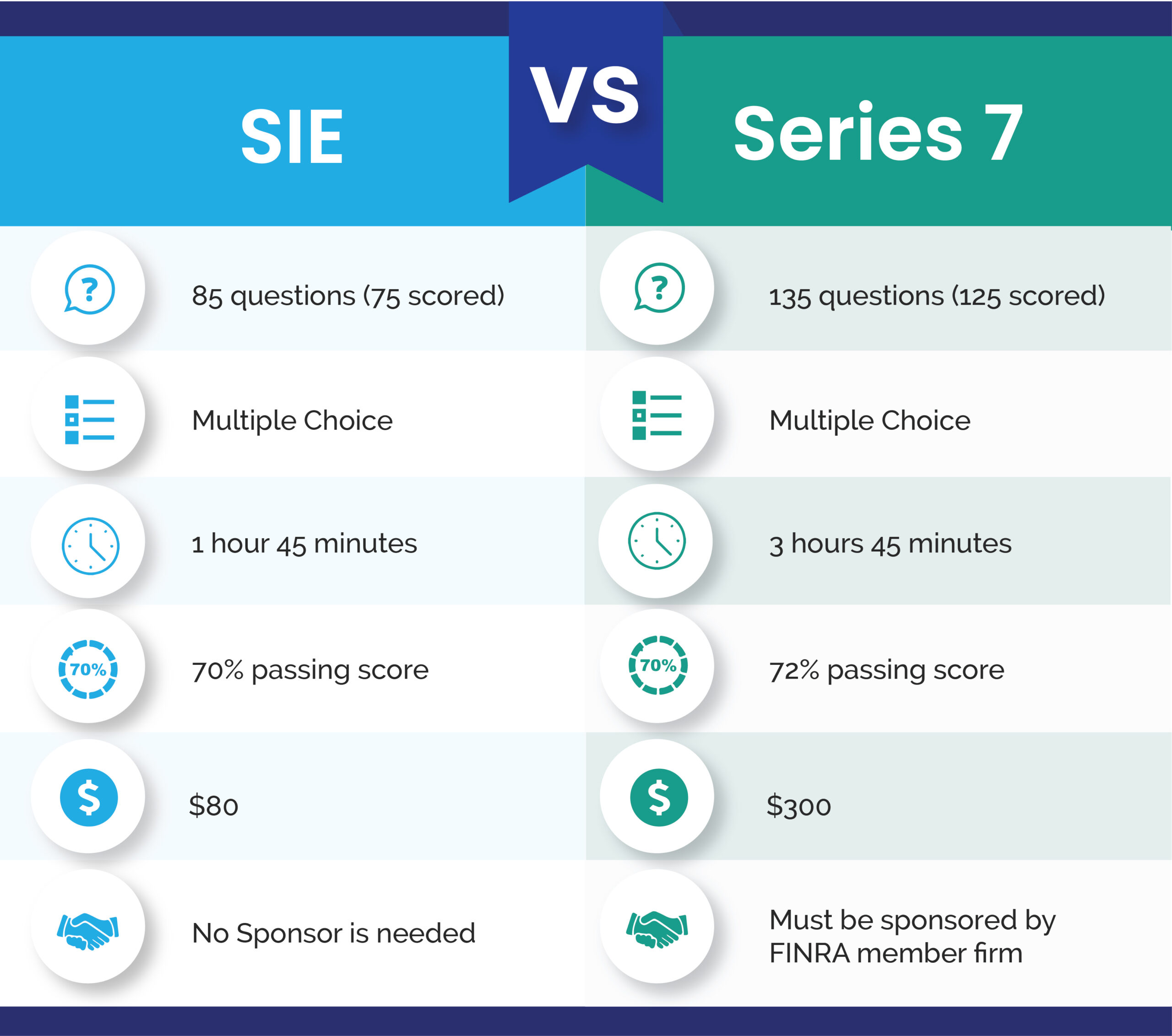If you want to be a representative who sells investment to clients, then you’re going to need your SIE and Series 7 License. Together, FINRA’s Securities Industry Essentials (SIE) Exam and Series 7 Exam authorize the individual to act as a General Securities Representative. This allows you to sell securities to customers and act as the agent of a broker-dealer.
The two exams are “co-requisites”, which means that you can take either one first. However, the smartest move is to take the SIE first. The SIE is a shorter exam with just 85 questions. It generally only requires 2–3 weeks of study, and you can register for and take the exam without being employed by a firm (meaning even students can take it).
The Series 7 is more in depth coming in at 135 questions. The exam covers more material, and it is recommended to devote 4–6 weeks of full-time study to adequately prepare for the exam. In order to register for the Series 7 Exam, you will need to be employed by a FINRA-member firm who can process your Form U4 and register you for the exam.
To make things simple, here is a breakdown of the differences between the SIE and the Series 7:
It is important to study well for the SIE as a lot of the concepts on that exam either serve as a foundation for material on the S7 or will be directly revisited on the S7. Using a good test prep provider for both the SIE and S7 can greatly increase your likelihood of success and reduce the time wasted trying to decide what to study. Remember to focus on practice questions and finals as they will help solidify the information in your brain.
The SIE and Series 7 will probably be the first two exams you take to become registered in the financial services industry. They are similar in many ways which is why preparing well for the SIE will help with the Series 7. After the SIE and Series 7, most will go on to take the applicable NASAA exam, usually the Series 66.

